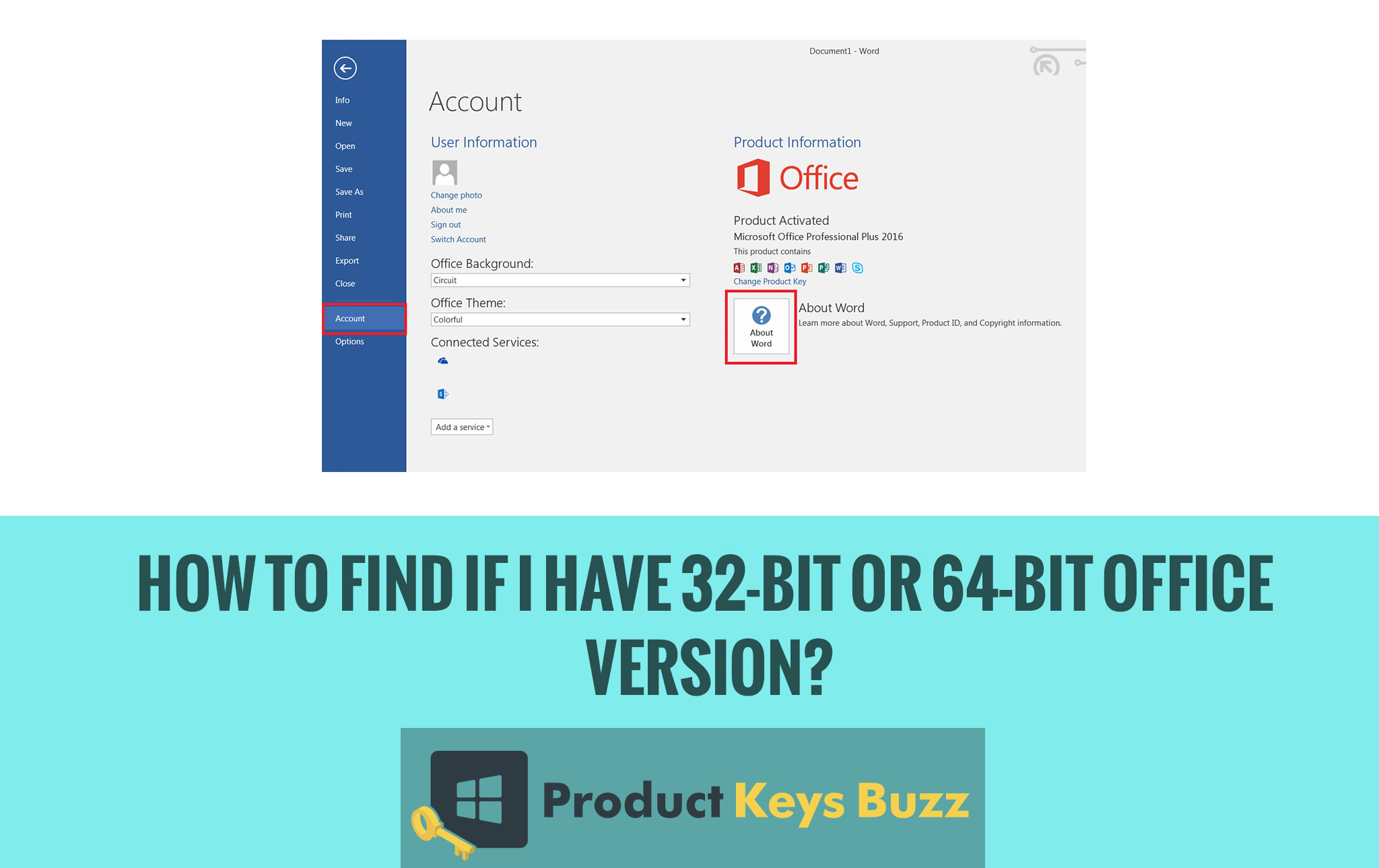
- #How can i tell if i have office 2016 64 bit or 32 bit install
- #How can i tell if i have office 2016 64 bit or 32 bit update
- #How can i tell if i have office 2016 64 bit or 32 bit full
- #How can i tell if i have office 2016 64 bit or 32 bit code
VBA previously didn't have a pointer data type, so you had to use 32-bit variables to store pointers and handles. This is expected to be a common issue when you have existing Microsoft ActiveX controls and existing add-ins. Native 64-bit processes in Office cannot load 32-bit binaries. If you want to run your existing solutions with the 64-bit versions of Office, be aware of the following:

The size (in bytes) of the pointer or handle depends on whether you're using a 32-bit or 64-bit system. In addition to referring specific locations (known as pointers) in physical memory, you can also use addresses to reference display window identifiers (known as handles).
/windows-10-system-information-57ebd1583df78c690fc8766d.png)
This means you can use more physical memory for data than before, potentially reducing the overhead spent moving data in and out of physical memory Comparing 32-bit and 64-bit systemsĪpplications built with the 64-bit versions of Office can reference larger address spaces than 32-bit versions. This is discussed in more detail in this article as well as compatibility issues between the 32-bit and 64-bit versions and suggested solutions.
#How can i tell if i have office 2016 64 bit or 32 bit update
Additionally, you must update address pointers and display window handles in user-defined types that are used by these statements. In VBA 7, you must update existing Windows API statements ( Declare statements) to work with the 64-bit version. You must explicitly select the Microsoft Office 64-bit version installation option.
#How can i tell if i have office 2016 64 bit or 32 bit install
Using the 32-bit versions of Microsoft Office enable you to use solutions built in previous versions of Office without further modifications.īy default, when you install a 64-bit version of Office you cannot install the 32-bit version alongside it. The changes described in this article apply only to the 64-bit versions of Office. Visual Basic for Applications 7.0 (VBA 7) is released in the 64-bit versions for Office, and it works with both 32-bit and 64-bit applications.
#How can i tell if i have office 2016 64 bit or 32 bit code
However, when you write 64-bit code, you should ensure that your code contains specific keywords and conditional compilation constants to ensure that the code is backward compatible with earlier version of Office, and that the correct code is being executed if you mix 32-bit and 64-bit code. When writing 32-bit code, you can use the 64-bit version of Office without any changes. The 64-bit versions of Office enable you to move more data around for increased capability, for example when you work with large numbers in Microsoft Excel 2010. Office applications are available in 32-bit and 64-bit versions.
#How can i tell if i have office 2016 64 bit or 32 bit full

If you’d like to know more, check out Help Desk Geek’s article explaining why 64-bit Windows needs two Program Files folders. This is why the folders are structured this way. The 64-bit versions of Windows have backward compatibility with 32-bit applications, but the 32-bit versions of Windows cannot run 64-bit applications. However, for 64-bit versions of Windows, the Program Files folder will contain 64-bit applications, while the Program Files (x86) folder will contain all 32-bit applications. If you’re running a 32-bit version of Windows, you should only see the Program Files folder (and all programs inside of it will be 32-bit).


 0 kommentar(er)
0 kommentar(er)
